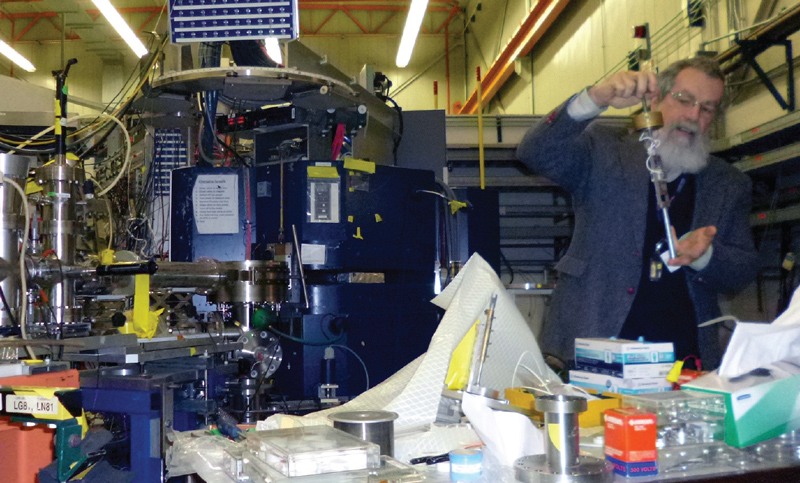Inside Argonne
Winter
2012
Interactions - SPS Chapters in Action
Inside Argonne
SPS Chapter Tours Nearby National Laboratory
By:Kevin McDermott at the University of Notre Dame

“The research being performed here can only be performed here. It’s work that is one of a kind,” explained Dan West, our SPS chapter’s tour guide at Argonne National Laboratory just outside of Chicago, IL. West was referring to the unparalleled capabilities of the Advanced Photon Source (APS), not to be confused with the American Physical Society. Magnets in the device, spaced out along a 1,104-meter ring, accelerate electrons to an energy of 7 GeV. The electrons radiate high-energy x-rays useful for all sorts of research applications.
Created just after World War II, Argonne started off as a research facility devoted to nuclear power. Since then it has evolved into a multipurpose and multidisciplinary facility, exploring topics that range from car batteries and nuclear physics to pharmaceuticals and green energy. Public research that culminates in published academic papers can be conducted at Argonne for free. Proprietary research, typically commissioned by private companies, requires a fee.
Five members of the University of Notre Dame SPS chapter hopped on a small charter bus to Argonne one day in November. Our tour focused on the physics side of the campus. APS was the big highlight. As West explained, APS is incredibly useful for imaging various materials, including proteins. Using computers to model how proteins fold is extremely time consuming, but pulsed beams of x-rays emitted by APS can capture images of a folded protein just before the protein is destroyed by the intense energy of the x-rays.
This improvement in imaging could spur research into rare and neglected diseases, said West, who mentioned a genetic disease that he suffers from for which there is currently no cure. Advances in protein imaging could allow rare diseases like his to be researched more efficiently, making such research potentially cheaper and more profitable for drug companies.
Our visit also took us to Blue Gene/P, a supercomputer optimized for parallel processing that is used to conduct research. Large-scale lattice quantum chromodynamics computations can be performed overnight on the computer. West noted that tours of Blue Gene/P are pretty rare and usually require some pull. Our contact at Argonne, Patricia Canady, really went out of her way to set up the tour. As a small undergraduate tour group, we were pretty excited about the unusual opportunity to see one of the world’s fastest computers in action.
Inside the room housing the computer, it was noticeably colder. The cooling ventilation system is optimized to allow air to flow continuously over the processors, which work nonstop on many different types of research problems. If the cooling system were to fail, the entire system would fry itself within a few minutes!
The tour provided an excellent opportunity for our SPS group to see the vast amount of research that is performed every day just an hour and a half away from our university. If you are looking to set up such a tour, the first thing to do is select a location. Do some research to see what the location has to offer and use this information to get some ideas of what you would like to see. Contact the laboratory to see what opportunities are available. Once a date has been selected, contact transportation options in the area. From there, spread the word, hop on a bus, and enjoy your tour! //
Further Reading
Learn more about Notre Dame’s SPS chapter at http://physics.nd.edu/undergraduate-program/courses/.
